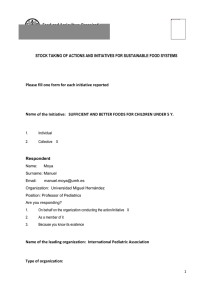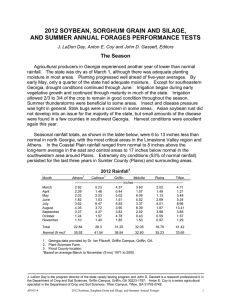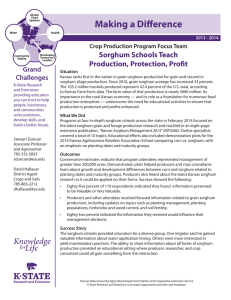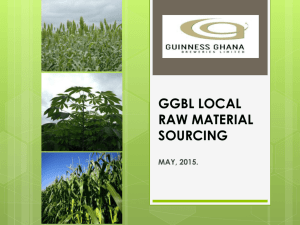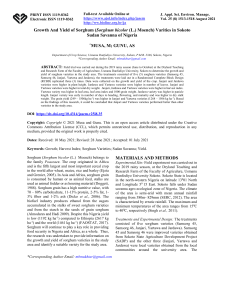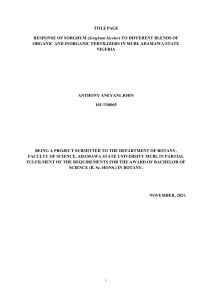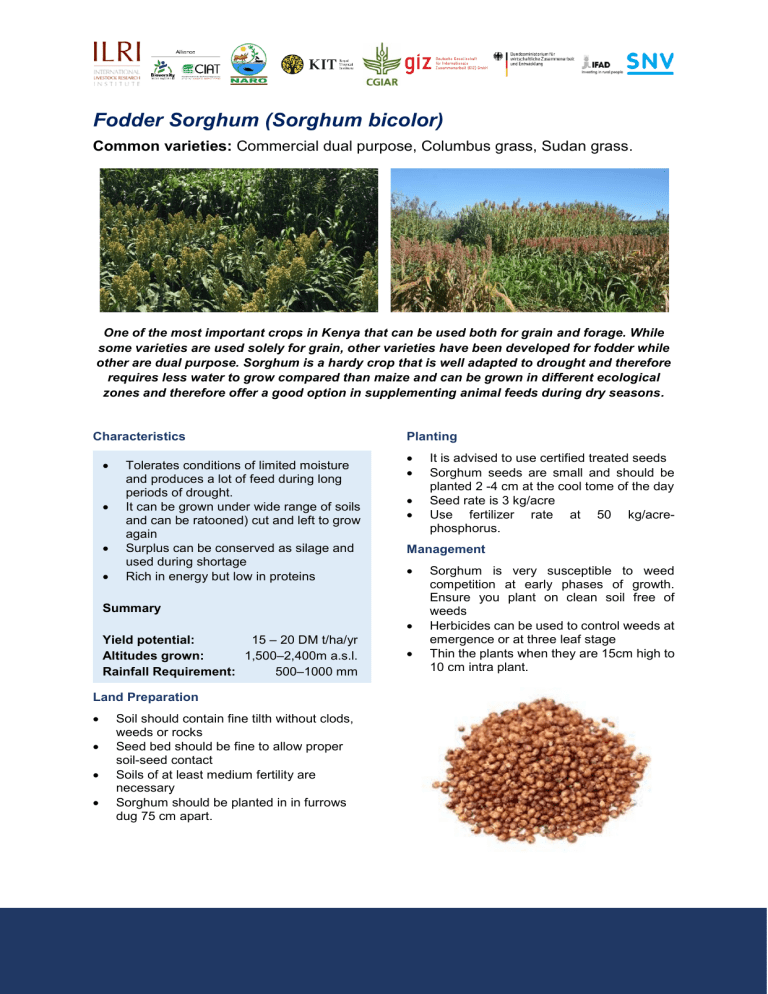
Fodder Sorghum (Sorghum bicolor) Common varieties: Commercial dual purpose, Columbus grass, Sudan grass. One of the most important crops in Kenya that can be used both for grain and forage. While some varieties are used solely for grain, other varieties have been developed for fodder while other are dual purpose. Sorghum is a hardy crop that is well adapted to drought and therefore requires less water to grow compared than maize and can be grown in different ecological zones and therefore offer a good option in supplementing animal feeds during dry seasons. Characteristics • • • • Tolerates conditions of limited moisture and produces a lot of feed during long periods of drought. It can be grown under wide range of soils and can be ratooned) cut and left to grow again Surplus can be conserved as silage and used during shortage Rich in energy but low in proteins Planting • • • • Management • Summary • Yield potential: 15 – 20 DM t/ha/yr Altitudes grown: 1,500–2,400m a.s.l. Rainfall Requirement: 500–1000 mm Land Preparation • • • • Soil should contain fine tilth without clods, weeds or rocks Seed bed should be fine to allow proper soil-seed contact Soils of at least medium fertility are necessary Sorghum should be planted in in furrows dug 75 cm apart. It is advised to use certified treated seeds Sorghum seeds are small and should be planted 2 -4 cm at the cool tome of the day Seed rate is 3 kg/acre Use fertilizer rate at 50 kg/acrephosphorus. • Sorghum is very susceptible to weed competition at early phases of growth. Ensure you plant on clean soil free of weeds Herbicides can be used to control weeds at emergence or at three leaf stage Thin the plants when they are 15cm high to 10 cm intra plant. Harvesting Conservation and Feeding • • • • • The aim is to harvest when the dry matter is between 27% to 30% so as to have quality silage. With the grain bearing variety, harvesting should be done when the grain in the middle of the pinnacle is in the milkydough stage. Crop should be harvested as long as the lower leaves start showing signs of drying out Observe hygiene and ensure soil particles don’t mix with the fodder • • • • • • • Sorghum can be fed fresh or conserved as silage Fresh sorghum contains prussic acid which can be toxic. Therefore, wilt for 3 days for acid to go down Sorghum silage should not be chopped to fine or too coarse to ensure that the silo is stable Silo should be built to allow a feeding speed of about 25cm per day The plant should be layered and compacted in a silo to expel air and then sealed Since sorghum is high in fiber and energy, it should be used in a feed ration together with feed high in energy and minerals. Sorghum classified as “forage sorghum” can form up to 50% of the silage-based feed ration Dual purpose sorghum must not go beyond 25% of the forage Acknowledgements “This factsheet was developed with funding from Dutch government (NOW) through the project “Feed and Forage Seed Business Models to support further professionalisation of the dairy sector in Kenya and Uganda”, registered under W 08.240.106, coordinated by KIT Royal Tropical institute and implemented by the Alliance of Bioversity International and CIAT, ILRI and NaLIRRI.”
